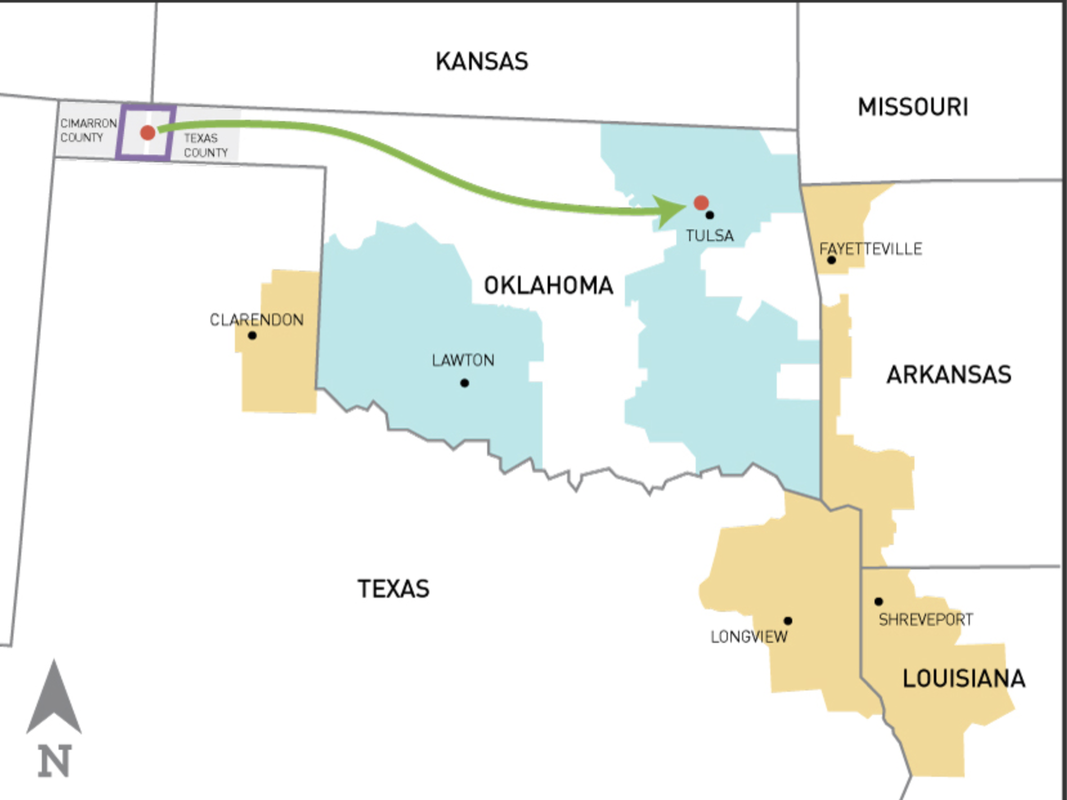Clean Line proposes to build a transmission line and sell capacity on the line to load serving entities who want to buy power from future wind facilities and ship it east to serve their retail customers.
But what if that load serving entity already owned a bunch of its own generation and transmission assets... would buying one more generator and building one more transmission line be no big deal?
Utilities make money by owning physical assets like transmission lines and regulated generators that allow them to shift the costs and risks to captive customers and earn a guaranteed return (or profit) on their ownership.
Clean Line wanted to make money just like any utility by owning a profitable asset. Except other utilities would much rather own the transmission (and generation) asset themselves and collect a return. It's sort of like the difference between paying rent and ownership, and ownership comes with a guaranteed return on your investment. What's not to like for big utilities who want to purchase generators and transmission lines to serve their geographically distant customers?
This article explains how utilities are cutting out the middleman wind farm and transmission line owner in favor of scoring the biggest profit.
Yup, AEP has announced that it wants to buy the country's largest wind farm currently under construction and build a transmission line from the wind farm to its customers. I'm guessing AEP doesn't want to buy transmission capacity from Clean Line and then hope generation springs up at its terminus. The risks of that are that Clean Line will never actually be permitted and financed to build any transmission, or that the wind farms won't be built, or that prices will be much higher than expected if they actually do. Utilities hate risk.
But AEP is no hero and its $4.5B plan has an uphill regulatory battle as it seeks to stick customers with the risks of its renewable energy plays. AEP figures its plan will save customers in four states $7 billion, most through use of federal production tax credits for wind. Ahhhh... AEP.... did you stop to apply any simple logic to that idea? Where do you think federal production tax credits come from? They come from taxpayers. They're not cash that just falls out of the sky when a wind turbine spins. So, those customers who receive $7B in savings are also paying into a tax system that creates the savings. How much do customers actually save when the tax burden of creating the credits gets added into the equation? How many other taxpayers around the country that don't receive any of AEP's $7B savings are going to be subsidizing this artificial savings house of cards? And what happens to a wind farm with a 25-year lifespan when a 10-year tax subsidy expires? What are the savings then? This plan may never come to fruition.
But it stands a much better chance than Clean Line's plan. It's interesting that AEP's ginormous wind farm is located in exactly the spot Clean Line claimed independently owned wind farms to support its Plains & Eastern Clean Line would spring up.
This is why you failed, Clean Line. Why buy the milk when you can own the cow?

 RSS Feed
RSS Feed